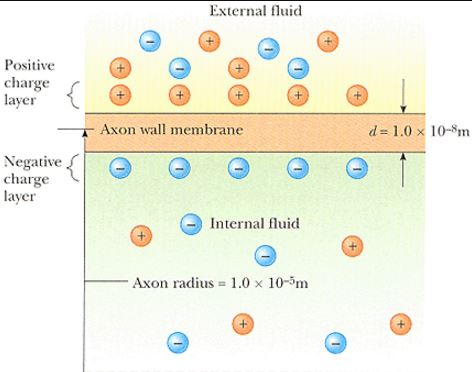Assignment:
Assume that the length of an axon membrane of about 10 cm is excited by an action potential (length excited = nerve speed x pulse duration = 50 m/s x 2.0 ms = 10 cm).
In the resting state, the outer surface of the axon wall is charged positively with K+ ions and the inner wall has an equal and opposite charge of negative organic ions, as shown in Figure.
Model the axon as a parallel-plate, capacitor and take C = kea/d; A/d and Q = C*V to investigate the charge as follows: Use typical values for a cylindrical axon of cell thickness d = 1.2 x 10-8 m, axon radius r = 12.0 µm, and cell-wall dielectric constant = 2.9.

1.) How much energy does it take to restore the inner wall of the axon to -70 mV from +30 mV?
__________________ J
2.) Find the average current in the axon wall during this process. (Hint: The time required to return to the resting state is 3.0 ms.)
__________________ µA